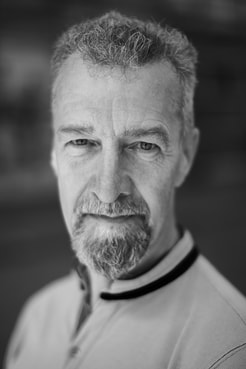
GREG LOFTIN is is a screenwriter. He wrote and directed his first feature film in 2007, the award-winning urban western SAXON. He is also course leader of the very first undergraduate program in film editing and postproduction in the UK. His world-class program of master classes has attracted visiting master editors such as Walter Murch (Apocalypse Now, The Godfather), Paul Machliss (Scott Pilgrim vs. the World, Baby Driver), Tom Rolf (Taxi Driver, Heat), Mick Audsley (Harry Potter and the Goblet of Fire, Murder on the Orient Express), and Lisa Gunning (Nowhere Boy, Seven Psychopaths). His book WRITING FOR THE CUT, from Michael Wiese Productions, is the result of a practice-based PhD that the University of Exeter awarded Loftin in 2016. We spoke recently about the vitality of editing in the filmmaking process, how vision is bound to the cut, and his favorite cinematic moment, the first interviewee to mention it, from a true classic.
Order Greg's book here.
Dave Watson: Congratulations on a wonderful book. How did this come about?
Greg Loftin: The book is really the harvest of quite a long period of PhD research. I always imagined I had something that might make a really useful screenwriting manual. So my first port of call was Michael Wiese Productions - my favorite how-to publishers for film.
DW: Do many directors and writers, in your experience, write and direct scenes with edits in mind? Is the decision on when to cut come after the story is written?
GL: Probably directors think about cutting when they’re choreographing a scene - their ‘vision’ is likely to be intimately bound to the cut - juxtapositions, pattern, rhythm, timing, etc. For many writers, I'd say the cut can appear to be something that happens way down the other end of the pipeline. But really the dynamic of the cut should be right there in the script.
DW: Editing can be an overlooked component of filmmaking, because we always know a cut is coming.
GL: Editing is the ‘invisible craft’, and the profession tends to be quite invisible too - what goes on in the suite remains a bit of a mystery to many. Some think of editing as a different kind of plumbing, others think it’s the place where ‘films are saved’. Editing is that and much more - it’s really what makes a movie a movie.
DW: You mention early on Georges Meilies giving us the substitution splice. Do you find early editing techniques ever cycling back and becoming used often/popular again?
GL: Probably around 90% of our editing grammar was set by the end of the silent era. The advent of sound changed things of course, and no doubt there was less burden on the cut to tell the story. But the essential dynamic of colliding this image with that image never goes away. In recent years we’ve had two quite brilliant films that celebrate silent filmmaking - The Artist and Biancaneve - and all the ‘old tricks’ still delight a modern audience.
DW: You talk about subtext also, which editing seems inherently to be a part of. Would you agree?
GL: Yes, subtext is one way of thinking about how the cut tells the story - we have a close up of the hero saying “I hate you” - cut - and we believe she’s telling the truth. But hold that shot a little longer, now we notice a look in her eye - oh she really loves him.
DW: Editing can be noticed right away in a film. You illustrate this with City of God, and I still recall that opening now almost seventeen years ago! Yet it’s not a distraction but clearly an integral part of the filmmaking and storytelling. Is this during quiet films as well as, say, action films?
GL: I think editing speaks more loudly in some films than others - some films are clearly ‘slow food’ experiences, others will feature bravura montage moments. But i’d say the poetry and pulse of the cut is present in all films, and is constantly working to tell the story, create traction, suspense and so on.
DW: What’s next for you?
GL: I’m designing a piece of software for screenwriters that allows them to write with text, pictures, and sounds - and with other writers. It looks a bit like a film editor’s interface - a student from my university has just finished creating an animated walk-through - it looks the business.
DW: Finally, what is your favorite cinematic moment?
GL: It’s probably got to be the very last shot from the film The Third Man where our hero Holly is in a cemetery, standing in the foreground of a long avenue trees. In the distance, and walking towards us is Anna. This should be the cheesy romantic ending we all secretly want - surely Holly and Anna can yet find happiness together. And she’s getting closer - and she just keeps on walking past Holly and straight out of frame. And there’s not a single cut - it’s sublime.
Clip: The Third Man
Founder and editor of Movies Matter, Dave Watson is a writer and educator in Madison, WI.

